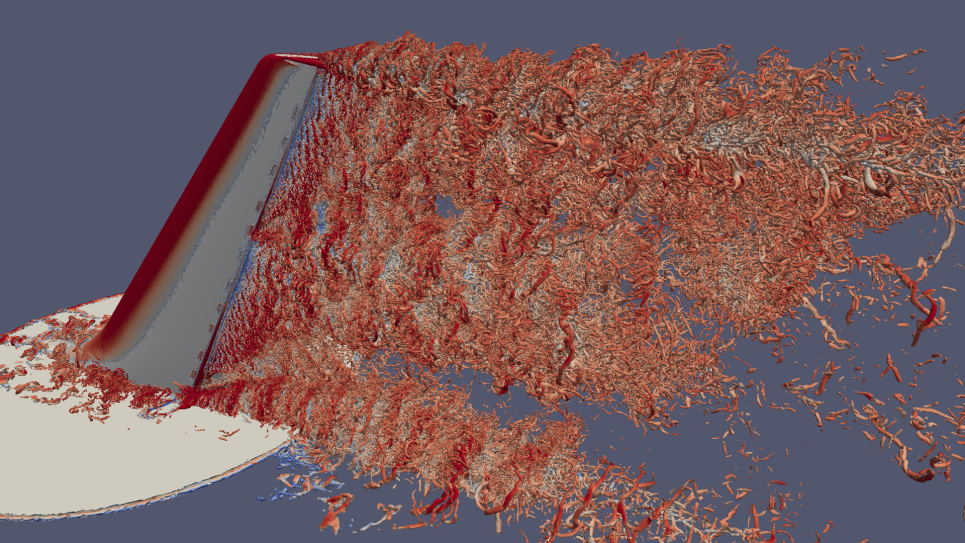Numeric simulations allow the study of physical systems and engineering concepts at conditions and scales beyond the reach of traditional experiments. One approach to achieving higher fidelity is to build and calibrate computational models by solving an inverse problem to match available measurements and data. MIT is currently developing optimization-based computational tools for solving such data-intensive inverse problems. The optimization-based computational tools are designed to work together with Large Eddy Simulation (LES), a computational method for solving turbulent flows that depends on accurate modeling of energy transfer between turbulent length scales.
Turbulent flows appear in engineering applications ranging from wind energy to internal combustion engines. To demonstrate the applicability of these tools to engineering design, MIT has partnered with GE Aviation. In this project, MIT and GE will partner to use these tools to simulate flow over jet engine turbine components, using a fundamental vane/blade geometry described in the literature by Kopriva and Laskowski. Applying these high-fidelity simulation and optimization methods to jet engine design has the potential to significantly reduce fuel consumption, leading to billions of dollars in fuel savings and a commensurate decrease in carbon emissions.

